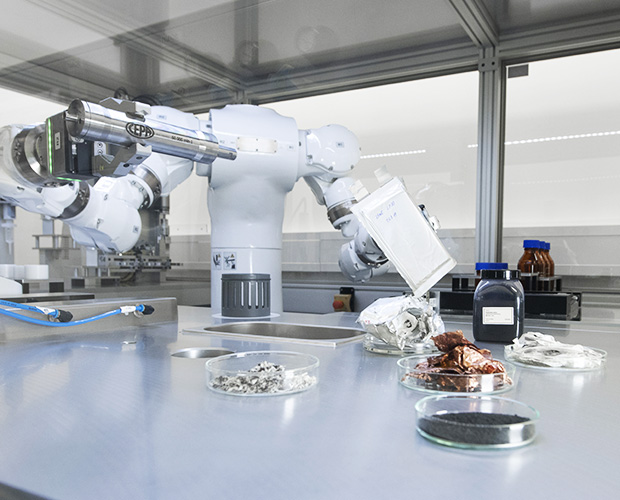Future-oriented electrode materials, electrolytes and other cell components as well as processes for their production and processing on a pilot plant scale - the Fraunhofer R&D Center for Electromobility FZEB has the entire project-relevant infrastructure for the automated small-scale production of lithium-ion cells from recycled materials, for the synthesis and regeneration of functional materials and their analysis. A number of highly interesting projects are currently underway at the Fraunhofer ISC, focusing on a "greener" battery value chain - read more in the following project reports.
Greener batteries of the future
Examples from current research
Project "IDcycLIB"
"IDcycLIB": innovation platform for a green, detectable and directly recyclable lithium-ion battery
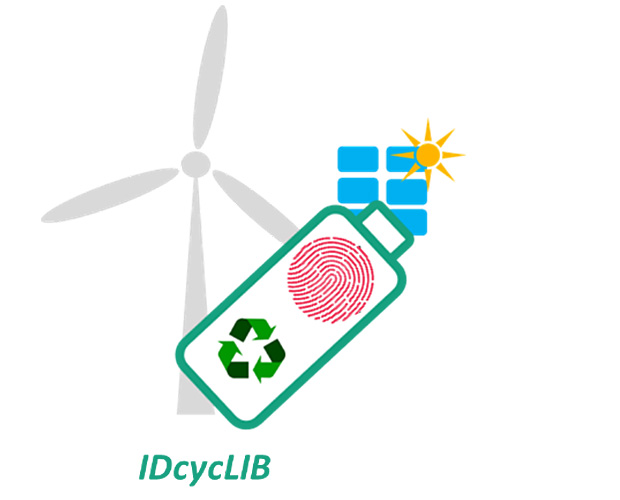
Industrial sectors in Europe and throughout the world are facing major challenges. These include technological sovereignty and job security in Germany and sustainably rethinking and redirecting the use of raw materials (based on the most efficient use and resource-conserving utilization concepts). In particular, the shift away from fossil-fueled mobility and towards sustainable electromobility powered by renewable energy has intensified discussions concerning battery resource requirements. The IDcycLIB collaborative project aims to tackle this issue with future-orientated concepts.
The five pillars of a sustainable and economical battery cycle
Within the IDcycLIB project consortium, 12 industry and research partners have joined forces to develop a coherent and sustainable concept for battery cell production, recycling, and reprocessing that is suitable for and that can be easily implemented within industry. The concept is built on five pillars:
"Green" battery cells
Water-based manufacturing processes for battery electrodes and functional materials (no solvents or dangerous process chemicals).
Design for Recycling
The design of and components contained in battery cells allow them to be easily and automatically dismantled. The functional materials are able to be sorted and processed easily and cost-effectively for reuse in new batteries.
Detectability | battery passport | digital twin
Cell components are coded with tamper-proof particulate markers that can be easily read. This enables automated pre-sorting according to cell chemistry and components, enables separation and reprocessing processes to be simplified, and allows material flows to be recorded digitally.
Efficient recycling processes
Gentle water-based electrohydraulic disintegration and material-sensitive sorting with novel centrifuge technology ensure that recovered material fractions for subsequent regeneration have a high purity.
Life cycle assessment
Life cycle assessment, life cycle costing, deriving parameterized models, and developing suitable software tools (including the LCA calculator and data exchange platform) for the evaluation and control of digitally recorded material flows all pave the way for sustainable battery development and recycling.
With these five pillars, the IDcycLIB collaborative project aims to build and test a toolset that will enable the sustainable fabrication, use, and economic recycling of battery cells as well as digital data management in the future. This means that the resource-saving circular economy for lithium-ion batteries (LIB) will not just be an option but will be an economically attractive one too. In addition to this, the project also opens up interfaces for future innovations such as digitally recording the cell condition.
Project "HydroLIBRec"
"HydroLIBRec": battery cells made from recycled material
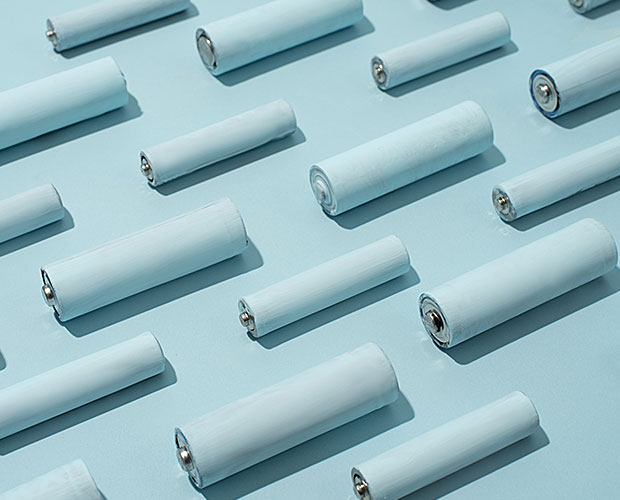
In recent times, battery recycling has not only become a huge business, but with increasing production figures, it is now also a necessity. Although there are already two general processing routes for recycling lithium batteries, the achievable recycling rate of these is limited. This is precisely where the HydroLIBRec project comes in.
Aim of the Fraunhofer ISC
This research project aims to produce battery cells from recycled material by recovering the active materials in a function-preserving manner and through subsequent chemical processing; to qualify these cells; and then to evaluate them with regard to their reuse in sustainable battery cell production. In this way, the project links recycling and design at the construction and material level with the objective of recycling nearly all the materials contained in a battery.
In particular, the project hopes to enable the reuse of resource-critical electrode materials in new batteries. From dismantling battery packs to the qualification of active materials, this project will develop and optimize the entire process chain, thereby establishing the technological prerequisites for effective, economically viable, sustainable, and function-preserving battery recycling that will ensure that lithium battery resources are available throughout Germany and Europe.
Broad field of application: using and circulating resources efficiently
The project will ensure that material cycles are effectively closed and that processes are further optimized. HydroLIBRec aims to create a tested basis with alternative process chains and a comparison with variations that are both modeled and evaluated within the framework of the project and assessed by means of life cycle assessment and profitability analysis. This also includes comparison with established processes. In this way, the project will show what practical options are available for efficient battery material recycling within Germany. Consequently, conclusions regarding recyclability will be drawn based on example batteries, which will bring about modifications to design in order to increase recyclability. The concept of simulation-based and recycling-optimized design provides a universal tool that can also be applied to other batteries of any type and size, enabling efficient resource use and recycling in a wide range of applications.
The unique selling point of this project is that design concepts are derived directly from simulation results regarding battery architecture and the associated process technology. Digital models make it possible to specifically analyze and optimize the (re)design process, product properties, and process parameters. The objective is to optimize the process parameters and process chains so as to qualify the properties of black mass recyclate for use in recyclate batteries (proof-of-concept).
Project "DiRecLIB"
"DiRecLIB": Direct recycling of active materials from lithium-ion batteries
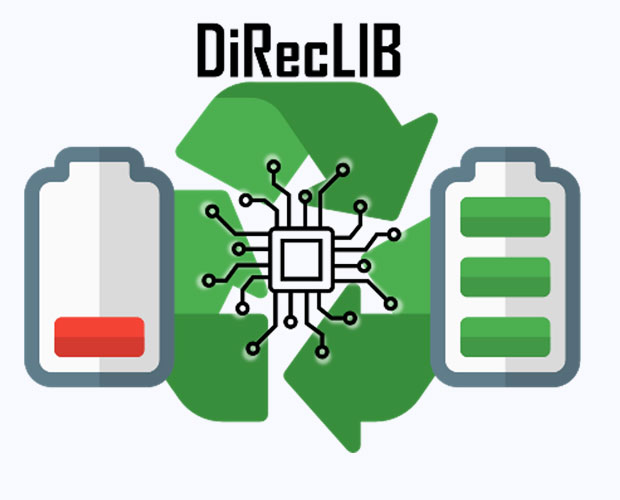
We have already looked at why recycling is so important when it comes to ensuring sustainable batteries in the future. This importance is also reflected in the numerous ongoing projects at the Fraunhofer Research and Development Centre for Electromobility Bavaria (FZEB) at Fraunhofer ISC which are also investigating various aspects of battery recycling.
Project partners working on the DiRecLib project are developing a continuous, digitally supported process for directly recycling active material from lithium-ion batteries which looks to offer very high levels of resource efficiency. For this purpose, research is taking place into the recovery of industry-relevant active materials such as NMC (lithium nickel manganese cobalt oxide), NCA (lithium nickel cobalt aluminum oxides), and LCO (lithium cobalt oxide). The process includes electrohydraulic fragmentation of electrodes and lithium-ion battery cells, deagglomeration and processing of black mass, fractionation of the active materials as completely as possible in a classifying centrifuge, and analysis of the recovered active materials.
The core mission of the project is to develop a digital twin that maps the entire process chain as the basis for a model-based control strategy. This is complemented through the development of online measurement technology and its integration into a soft sensor environment. Soft sensors are virtual sensors that use machine learning algorithms to provide output information that is suitable for use in optimization. The project’s core mission will then be completed through both the creation of a data-driven model based on machine learning methods that enables the entire process chain for different battery materials to operate autonomously and the increasing of performance to achieve industry quantities with the classifying centrifuge.
The DiRecLIB demonstration plant is being set up at Fraunhofer ISC where a continuous process for the direct recycling of LIB active materials is being created – something which already has high industrial relevance (TRL 5-8). Further, the ISC team is responsible for carrying out a comprehensive life cycle assessment of the entire recycling process in terms of resource efficiency and sustainability and will compare the results with established processes. This involves examining the reprocessing of process water as well as the recyclability of commercially available cathode materials that have been recovered by the DiRecLIB process. The results will then be integrated into a material database.
Alongside the joint development of the demonstration plant, project partners are providing a comprehensive process for the direct recycling of batteries on a pilot scale and with high resource efficiency. This not only opens up large market areas but also brings ecological process management to the fore with the aim of offering sustainable solutions to current challenges within the mobility and energy industry.
The project is funded by the "Digital GreenTech - Environmental Technology Meets Digitalization" funding initiative from the German Federal Ministry for Education and Research (BMBF).
Project »SisAl«
"SisAl": process control and raw material chains to minimize CO2 in silicon and aluminum oxide production
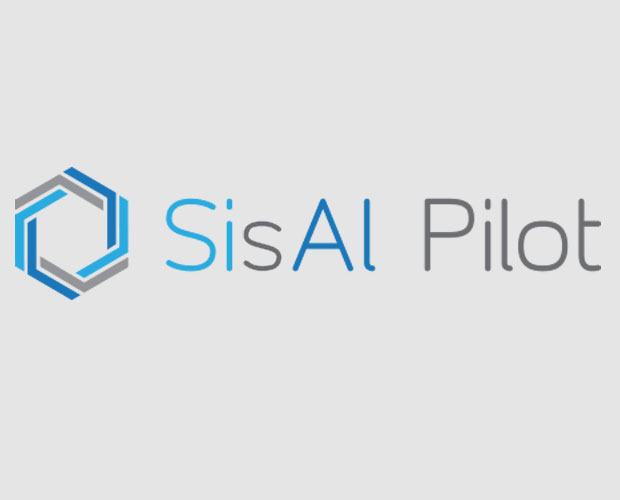
Pure silicon (Si) and high-purity aluminum oxide (HPA) are essential to many technical and electronic applications. Si is used both in the semiconductor electronics industry and in photovoltaics to generate solar power. HPA is used as a raw material, for example, in light-emitting diode production and lithium-ion battery manufacturing. However, the production of Si and HPA is currently unsustainable. Every ton of Si produces significantly higher volumes of CO2 as well as harmful waste materials. The production of HPA from high-purity primary aluminum is also very energy-intensive, leaving behind a large carbon footprint. The SisAl project, funded by EIT RawMaterials, aims to find solutions to this problem by sophisticatedly linking together and recycling the processes and the CO2 that is produced.
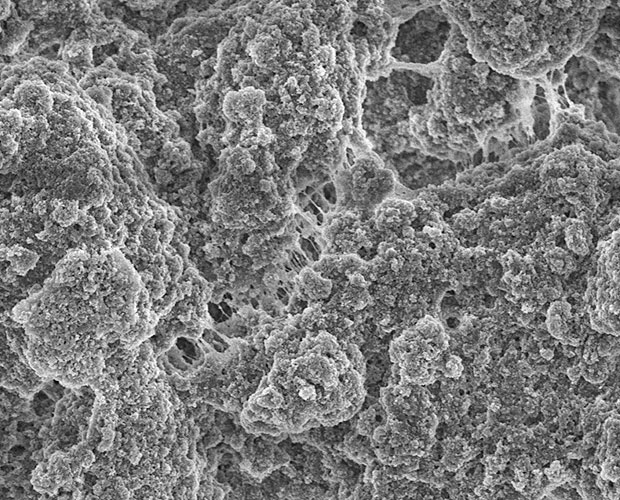
The SisAl process begins with carbon, which it replaces with secondary aluminum sources (e.g., scrap) as a reducing agent for Si production from quartz (SiO2). At the same time, this produces slag that functions as a perfect preliminary product for HPA recovery. The introduction of an integrated CO2 cycle further improves the already outstandingly low CO2 footprint of the SisAl process.
Fraunhofer ISC is supporting the SisAl project by providing its expertise on batteries and is using the HPA produced in the SisAl process to coat anodes and separators in lithium-ion cell production, which is expected to increase service life and cycle stability. To this end, extensive tests and analyses are being carried out on HPA and on the SisAl cells.
Thanks to the SisAl process, the transition to a low-carbon circular economy and other major challenges will be transformed into an opportunity to produce key technical raw materials within Europe in a sustainable manner with low CO2 emissions. Replacing a single traditional silicon smelter in China with a new SisAl smelter in Europe would save €50 million annually in social costs of carbon, according to the SisAl consortium’s estimates.
So, instead of shifting production to countries with less stringent emissions regulations (so-called carbon leakage) and negatively impacting on global emissions, SisAl aims to create technological opportunities that are both sustainable and economically attractive and that will allow this production, which although energy-intensive, is also crucial to the European economy, to be brought back to Europe.
